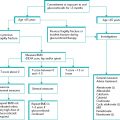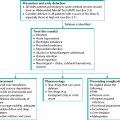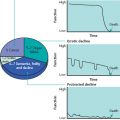Intermediate care – the context
The development of intermediate care services first became UK Department of Health policy with the publication of the National Health Service (NHS) Plan in 2000. The National Service Framework for Older People followed in 2001, setting out targets and goals for the introduction of intermediate care services. In 2004, the NHS Improvement Plan introduced the new role of community matrons to support patients with long-term conditions at home.
In 2006, Our Health, Our Care, Our Say: a New Direction for Community Services was published and set out the government’s vision for integration of health and social care services, and providing more care closer to people’s homes. The clinical case supporting these changes was set out by the National Director for Older People in his 2007 report A Recipe for Care – Not a Single Ingredient.
In response to these agendas, intermediate care services have been developed. Community matrons have been appointed. Increasing numbers of consultant geriatricians now work in the community as well as the acute hospital. Teams are working to support older people in the community, including palliative and end of life care.
What is intermediate care?
Intermediate care is a range of integrated services provided at or near to a person’s home that aims to promote faster recovery from illness, maximise independence, prevent unnecessary admission to hospital and facilitate timely discharge (see Box 14.1). It allows appropriate and early access to comprehensive geriatric assessment and involves working across health and social care boundaries.
The Department of Health definition, supported by the British Geriatrics Society, states that the term ‘intermediate care’ describes services that meet all of the following criteria.
- Targeted at people who would otherwise have had an unnecessarily prolonged hospital stay, or inappropriate admission to acute inpatient care, long-term residential care, or continuing NHS inpatient care
- Provided on the basis of a comprehensive assessment, resulting in a structured individual care plan that involves active therapy, treatment and opportunity for recovery
- Has a planned outcome of maximising independence and typically enabling patients to resume living at home
- Is time limited, typically no longer than 6 weeks and frequently as little as 1 or 2 weeks
- Involves cross-professional working, with a single assessment framework, single professional records and shared protocols
Services at the interface between hospital and primary care have developed in response to national policies and local needs. This has resulted in geographical variations in local implementation and different models of intermediate care (Box 14.2). Many areas run a combination of models. Composition of teams and leadership of services also varies (Box 14.3). Services may be led by nurses, general practitioners or geriatricians.
Why is intermediate care important?
Intermediate care offers a co-ordinated service that links primary and acute hospital care, community health services, social care, carer support and health promotion. It makes more effective use of hospital capacity and consequently helps support waiting time targets and allows better response to emergency and seasonal pressures.
Evaluation of intermediate care services has demonstrated reduced length of stay in hospital and higher patient satisfaction ratings. Outcomes are at least as good as traditional acute hospital care and costs are roughly equivalent. Intermediate care may also reduce the need for long-term residential care by allowing time and space for recovery of health and independence before decisions are made about future care needs.
| Residential rehabilitation | Intermediate care based in care in community beds. These beds may be located in a care home or community hospital close to the patient’s home |
| Home-based rehabilitation | Intermediate care based in the patient’s home |
| Hospital at home | Provide active treatment by healthcare professionals in the patient’s own home for a condition that would otherwise require acute inpatient care. Examples include the administration of intravenous antibiotics |
| Early discharge schemes | These target groups of patients with a specific condition for an early supported discharge from hospital e.g. patients with stroke or chronic obstructive pulmonary disease |
| Day hospital | Provides a variety of multidisciplinary therapy, medical investigations and treatment. Access to specialist clinics may also be available e.g. falls or continence clinics |
| Rapid response teams | Respond to referrals from ambulance services, the emergency department, general practitioners, community nurses and social services. They allow rapid assessment and identification of patients’ needs and facilitate appropriate care and rehabilitation in the community |
Stay updated, free articles. Join our Telegram channel

Full access? Get Clinical Tree








